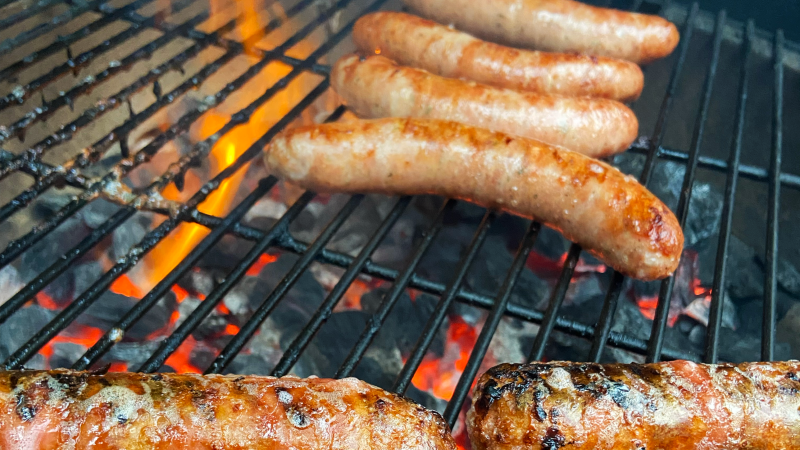As summer temperatures soar, many Americans are firing up their grills for family cookouts. However, this beloved tradition often results in over-cooked hamburgers, burnt bratwurst, and scorched steaks. Renowned chef Tyler Florence, author of the latest cookbook “American Grill,” offers insights into avoiding these common grilling pitfalls.
The Dance Between Hot and Cold
Florence identifies a critical mistake many grillers make: setting their grills to full heat. “They’ll either put charcoal and hard fuel in the bottom of a grill, light it, and make the entire thing one temperature,” he explains. “Or they’ll light all four burners on the gas grill and make the whole thing hot.”
According to Florence, the key is creating a grill with two zones: a hot zone for direct heat and a “cool” zone for indirect heat. For charcoal grills, this means placing charcoal on one side only. For gas grills, ignite only the burners needed for the hot zone.
“Beef, shrimp, chicken — protein loves high temperature, but only for a minute,” Florence advises. “They like the caramelization.” However, he warns that too much time at high temperatures can overcook the exterior before the interior is fully cooked. “You want to do this little dance back and forth between the hot side and the cold side,” he explains.
Managing Flare-Ups
Florence, who owns San Francisco’s Wayfare Tavern and Miller & Lux steakhouse, highlights the popularity of grilling high-fat cuts like ribeye steaks and smashburgers. However, these can cause flare-ups when fat drips onto the heat source.
“When fat renders down at high temperatures, it will drip onto the heat source and cause flare-ups that can burn the exterior of the meat and cause safety issues,” Florence notes.
His solution? Use a cast iron skillet on the grill. “I like to use cast iron — on top of the grill — as a plancha,” Florence says, referring to a flat metal plate used in Spanish cuisine to sear meats. This method prevents fat from dripping and allows for basting with collected juices.
Timing Sauces and Marinades
While marinades and sauces can enhance grilled proteins, Florence warns against applying them too early. “If you’re going to make barbecue chicken, don’t dip your barbecue chicken in barbecue sauce and then grill it because the sugar in the barbecue sauce will burn before the chicken can cook all the way through,” he cautions.
Florence suggests waiting until the chicken is two-thirds cooked before applying sauce. “It’s in that final third that you get that gorgeous mahogany color,” he says.
The Myth of Grill Marks
Grill marks have long been a sought-after feature of grilled meats, but Florence dismisses their importance. “F*** grill marks,” he proclaims, explaining that they do not enhance flavor and can cause sticking.
“Using a cast-iron skillet will create a more attractive-looking sear and more opportunity to baste the meats with fats and herbs,” Florence emphasizes.
This approach not only improves the appearance of the meat but also enhances its flavor, increasing the likelihood of a successful cookout.
As grilling season continues, Florence’s expert advice offers a pathway to mastering the art of grilling, ensuring that family cookouts are memorable for all the right reasons.
